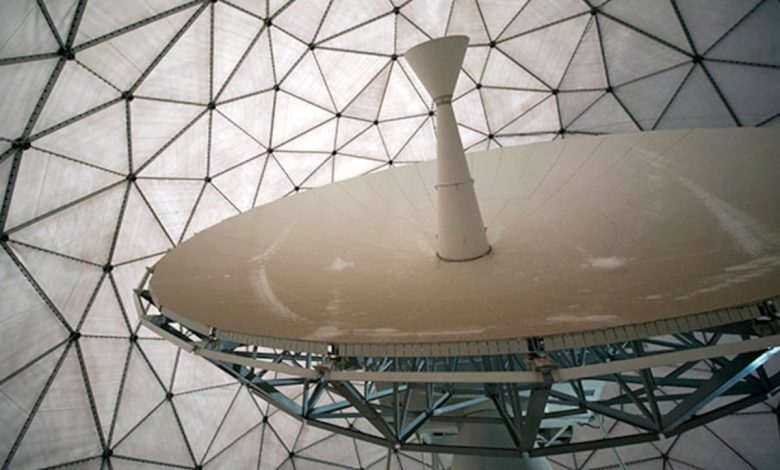Space Force acquisition office ‘aggressively’ pushing reform efforts

Although the Space Force currently lacks a Senate-confirmed acquisition executive, the service’s interim procurement lead, Maj. Gen. Stephen Purdy, said this week he is making a concerted push to follow through on reform efforts championed by his former boss — and in many cases, pursue them even more intently.
During his time in the Pentagon, former head of space acquisition Frank Calvelli penned a list of acquisition tenets, which became his formula for delivering satellites and ground systems on faster timelines. It called for program managers to hold companies accountable for poor performance, award executable — and mostly fixed-price — contracts and, when possible, opt for commercial capabilities over bespoke government systems.
Purdy, who has served as acting acquisition executive since Calvelli left the role in January, said Tuesday that he and his team are making the most of this transition period by taking further steps to revamp the Space Force’s acquisition enterprise.
“When you think about things like fixed-price type contracts, nonrecurring engineering, two-to-three year development cycles, it fits the modality of getting us into a space of good acquisition principles,” Purdy said Tuesday in a speech at the Defense Space and Intelligence Conference in Reston, Virginia. “Think of us as continuing those efforts, but more aggressively.”
Speaking with reporters on the sidelines of the conference, Purdy said his focus during this leadership transition is twofold. First, he wants to maintain — and in some places gain — momentum on acquisition accountability initiatives. But he’s also putting processes in place to better track the Space Force’s progress so that when a new leader is confirmed, they have the data they need to make decisions about where to go next.
“We’re not going to sit around. I know that there are common sense things for us to go move on,” Purdy said. “If something gets too political or weird, I’ll float it up to leadership. But my goal is to build processes … so that we’ve got a good assessment for what’s going on.”
Purdy’s focus on tracking performance and breaking down troubled programs comes as Elon Musk’s Department of Government Efficiency is expected to set its sights on the Defense Department in the coming weeks. Speaking last week at a White House press conference, President Donald Trump said the organization, known as DOGE, would soon be scouring the Pentagon’s $850 billion budget for potential cuts.
During Calvelli’s tenure, the Space Force cut or restructured 14 programs that weren’t delivering, many of them classified, Purdy said Tuesday. The service is now conducting deep-dive reviews of all of its contracts and identifying programs that are at risk of cost overages or schedule delays — whether that’s because they’re operating under cost-plus contracts or their technical requirements are too complicated.
As an example, Purdy highlighted a Space Force effort to buy a fleet of small satellites to monitor geosynchronous orbit, about 22,000 miles above Earth. The service released a request for information last year that included “some pretty harsh requirements,” he said. After reviewing the program, the service decided to rewrite some of those specifications so that commercial firms can more easily meet them. That change is currently in the approval process, Purdy noted.
The acquisition office is also working to finish Calvelli’s effort to convert most programs still operating under cost-plus contracts to fixed-price arrangements. Under fixed-price contracts, companies are responsible for covering any unexpected costs incurred during a development program, reducing the government’s risk.
About half of the Space Force’s contracts today are still cost-plus, Purdy said.
“We’re going to look hard at figuring how to get out of that, and it’s going to be painful on all sides,” he said.
Purdy highlighted some progress the service has made on two notoriously delayed programs: the Next-Generation Operational Control Segment, or OCX, a ground system designed to operate modern GPS satellites; and the Advanced Tracking and Launch Analysis System, or ATLAS, a key space command-and-control system.
OCX, built by RTX, is in the home stretch of a rigorous test program, and Purdy said 97% of the system’s requirements have been tested. He said the team is “running toward” its goal of declaring OCX ready to transition to operations this summer.
ATLAS is delivering software on a regular cadence, and Purdy noted that most major deficiencies have been addressed. The system, developed by L3Harris, should also be ready for initial operations this summer.
Courtney Albon is C4ISRNET’s space and emerging technology reporter. She has covered the U.S. military since 2012, with a focus on the Air Force and Space Force. She has reported on some of the Defense Department’s most significant acquisition, budget and policy challenges.







